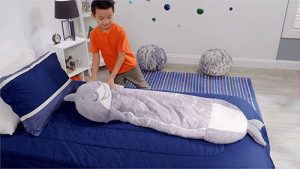Within the scope of article 2, paragraph 1 of the Toy Safety Directive Artikel 2, products are defined as toys, when they meet a number of criteria.:
Contrary to the previous Toy Safety Directive 88/378/EEC, the phrase “whether or not exclusively” has been added to the definition, indicating that even if a product was manufactured for other purposes, it can still be considered a toy.
This product can/may be used for other purposes while still be considered a “toy”
The official Guidelines for the implementation of the Toy Safety Directive offer examples, such as: a keychain with a teddybear, or a sleeping bag in the shape of a stuffed animal. These are products which, though not primarily intended for use in play, must be classified as toys.


An object will only be regarded as a toy, when the manufacturer has intentionally assigned play value to it. This will be confirmed by a Declaration from the manufacturer himself. However, the reasonably expected use must be given priority, compared to the manufacturer’s Declaration.
In other words, a manufacturer will not be able to avoid his responsibilities, by simply declaring that his product does not contain any play value.
Read our article concerning which products are not regarded as toys.
5/10/2024
5/10/2024

5/10/2024
5/10/2024
5/10/2024
5/10/2024
5/10/2024
5/10/2024
5/10/2024
5/10/2024